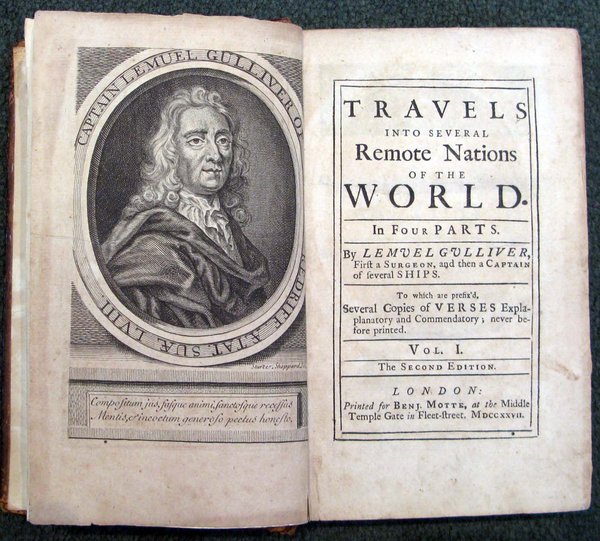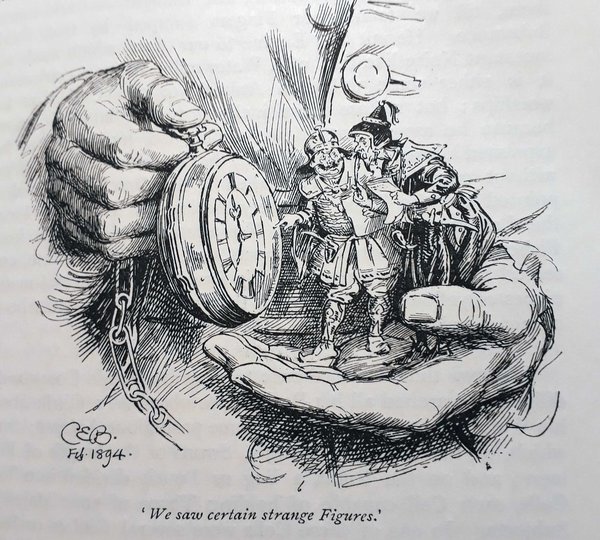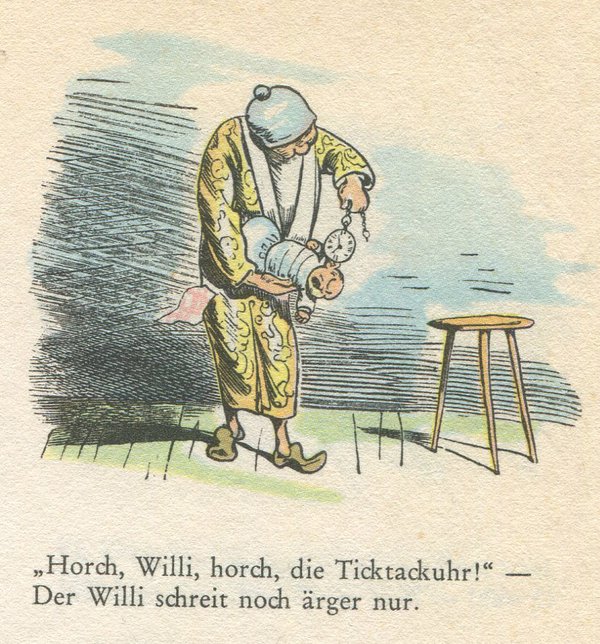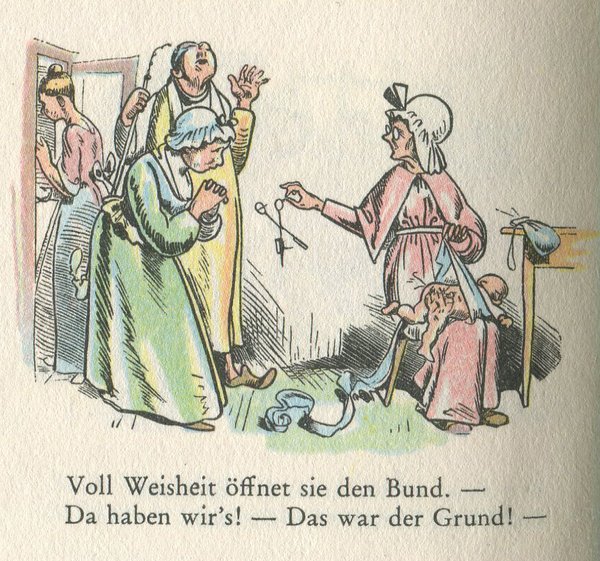Two watches in literature
This post was written by Peter de Clercq
By way of summer entertainment, here are two watches, both regarded with incomprehension but for very different reasons.
In his famous book Travels into several remote nations of the world by Lemuel Gulliver, published in 1727, Jonathan Swift relates how, during his first voyage of 1699, Gulliver is washed ashore after a shipwreck and finds himself a prisoner of a race of tiny people, less than 6 inches (15 cm) tall, who are inhabitants of the island country of Lilliput.
At the Emperor’s instruction, two officers inspect the contents of his pockets and draw up an inventory. Everything they find – a hairbrush, a snuff box, knives for shaving and eating – is a mystery to them, and the same goes for what they find next.

‘Out of the right fob hung a great silver chain, with a wonderful kind of engine at the bottom . . . which appeared to be a globe, half silver, and half of some transparent metal; for, on the transparent side, we saw certain strange figures circular drawn, and thought we could touch them, till we found our fingers stopped by that lucid substance.
'He put his engine to our ears, which made an incessant noise like that of a water-mill; and we conjecture it is either some unknown animal, or the god that he worships; but we are more inclined to the latter opinion, because he assured us (if we understood him right, for he expressed himself very imperfectly) that he seldom did anything without consulting it. He called it his oracle, and said it pointed out the time for every action of his life.'

In 1894, Macmillan published a luxury edition of Travels ..., and commissioned the English painter, line artist and book illustrator Charles Edmund Brock (1870–1938) to prepare one hundred illustrations, including the watch scene.

Heinrich Christian Wilhelm Busch (1832–1908) was a German humorist, poet, illustrator, and painter. His wildly innovative illustrated tales have remained in print ever since they first appeared.
Probably the most famous one is Max and Moritz in which two boys are terribly punished for a series of pranks – many of Busch’s stories are not for the faint-hearted! I still treasure the edition I was given as a child, containing a selection for the young of the best-loved tales, all coloured-in (the original published editions were in black and white).
In the story Der Schreihals (The Bawler), dated 1869, we find the second watch. Ever since his mother has bundled him in, the baby boy has been screaming, nothing can make him stop, not even the father who tries to amuse him in various ways, including in the image captioned ‘Hear, little Willy, listen to the tick-tack watch / But Willy simply cries even louder’.
The ordeal only ends when an aunt comes to visit, and ‘Full of wisdom, she opens the bundle / There we have it! That was the cause!’
In the final image, ‘Willy, relieved of the pain / Laughs loudly for pure happiness.’


